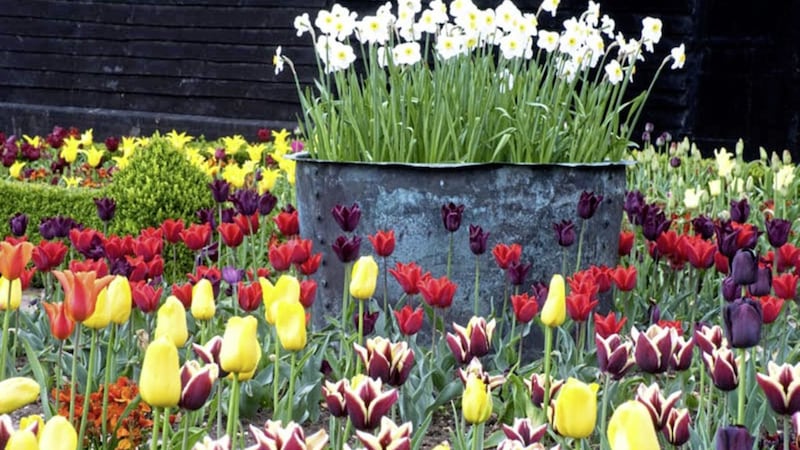OVER the next couple of weeks, the last of the colourful autumn foliage will fall from the trees, resting on permanently damp ground that will only lose its squelch when it freezes. We wake up to darkness and dusk arrives when the kids are barely out of school. Welcome to winter, nature’s lockdown.
There’s just about enough to keep us gardeners busy over the coming months but not that much to keep us interested, which is why thoughts turn to spring, the beginning of next year’s growing season. The first hints of spring come soon after St Brigid’s Day, February 1, when the snowdrops’ bright, diminutive heads begin to carpet the ground. Soon after come the daffodils, bluebells, alliums and tulips, the latter arguably the most demanding of the spring-flowering bulbs.
There was a time when the received wisdom was to plant your tulip bulbs before the end of September. Global warming and less severe winters, coupled with breeding that ensures the bulbs are less susceptible to the tulip fire fungal disease, means there’s less of a rush these days. November into December will be fine just as long as the ground isn’t frozen.
There’s no doubting the tulip’s appeal. Upright and clean in form, their bright, colourful flowers are both ostentatious and elegant at the same time. They’ll work well in a mixed border but it’s usually in formal, symmetrical schemes that they are best deployed.
But some might ask why you’d bother with tulips. You see, unlike the other spring bulbs mentioned above, tulips aren’t necessarily perennial, so it’s only in some circumstances that you’ll get the same display year after year. Treating them as annuals or lifting and drying them every year may suit dedicated tulip enthusiasts but for the rest of us it’s a bit too much hard work and outlay with relatively little reward. Not only that, depending on variety the flowering period can be any time between March and late May, which unless you pay close attention can play havoc with your planned colour scheme.
To overcome these two obstacles, first choose so-called Darwin hybrids. Sometimes called 'perennial tulips', these bulbs will provide large, showy flowers with a classic tulip shape and a strong spring display for up to five years. They are so-called because they are a cross between the wild tulips of the Central Asian uplands – AKA the Fosteriana or Emperor tulip – and the Darwin tulip.Typically, they bloom between mid-April and mid-May.
If you’re in luck you’ll still find some of these Darwin hybrid tulip bulbs on sale – some might even be available at a reduced price.
For impact, it’s hard to eat 'Red Impression’, a dazzling flower that appears at first to be vivid ruby red but this Darwin hybrid has a variety of tones and shades with hints of rose and plum. When fully opened, the interior of the flower is revealed to be a deep red against a black base, with a yellow trim.
Tulip ‘Apeldoorn’s Elite’, which carries the RHS’s Award of Garden Merit, has flowers that are a rhubarb and custard mix of red and buttercup-yellow and look almost good enough to eat.
‘Lady van Eijk’ is tall (20 inches) with bright pink flowers, with a touch of lilac on the outside of the petals, while Golden Apeldoorn is again relatively big with flower heads of deep yellow with a contrasting black centre.








